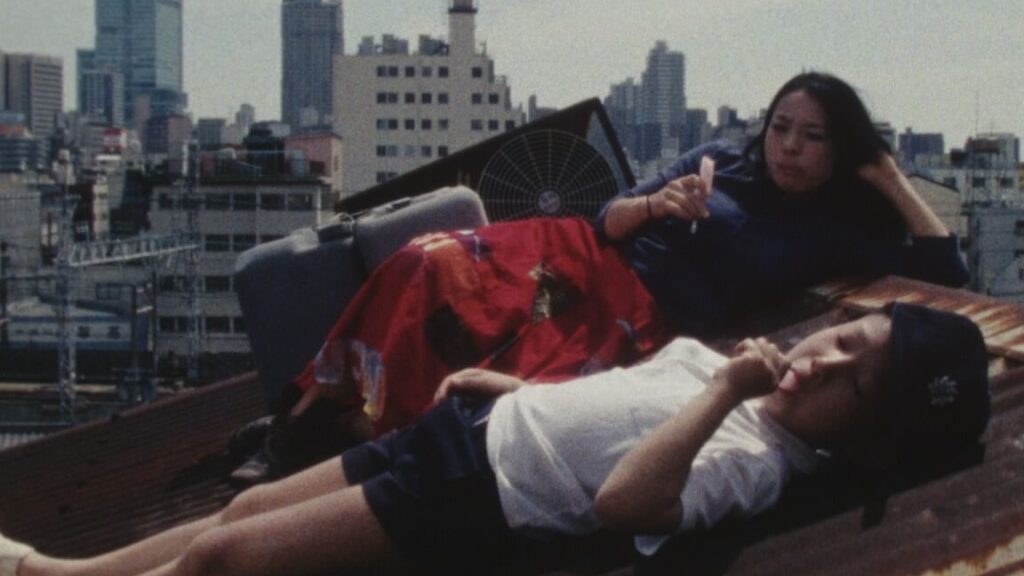Set in the Osaka slum of the title, The Kamagasaki Cauldron War’s very existence testifies to its politics: it defies a local ordinance that deems the neglected neighborhood literally unnameable. It also stands — along with former Japan Cuts comrades Sanchu Uprising and Hanagatami — against Tokyo’s cinematic hegemony, which strictly insists on prime city cosmopolitism. Director Leo Sato partnered with Kamagasaki’s decidedly un-cosmopolitan outsider community to revive a proletarian tradition arguably dormant in Japan since 1937, when, on the day of its premiere, Humanity and Paper Balloons effectively printed Sadao Yamanaka’s one-way ticket to the front lines. The Kamagasaki Cauldron War lifts a few compositional strategies from Yamanaka’s final testament, though the antics of The Million Ryo Pot form a clearer narrative model. Here, the local yakuza’s ceremonial rice pot has gone missing, triggering a sudden supply-and-demand spasm, inflating the value of this widely available, mundane object and subjecting Kamagasaki’s day laborers to the market’s most idiotic whims. The madcap scramble to nab all the local product for resale is led by neighborhood fixture Nikishi, rapscallion turned accidental anarcho-Marxist; he wouldn’t for a second feel out of place in the wildest Preston Sturges comedy.
That Sato plays Nikishi’s transformation — from self-interested conniver into a man of higher, if grudging, consciousness — for laughs suggests that the filmmaker is an honest purveyor of proletarianism in a World Cinema of pretenders. He has little patience for the liberal (read: arthouse) pieties that would demand that a poverty of humor match a poverty of means, to say nothing of dubious neoliberal redevelopment ideologies, which here meet a perfectly blunt dismissal: “The Osaka Expo kills people.” So yes, The Kamagasaki Cauldron War is raucous and ramshackle and very funny, but that’s because Kamagasaki is raucous and ramshackle and funny, and because having a better time than the better classes is the best class weapon.
Published as part of Japan Cuts 2019 | Dispatch 1.


Comments are closed.